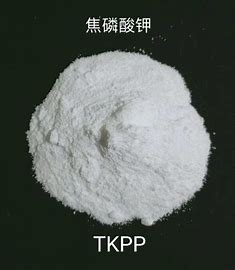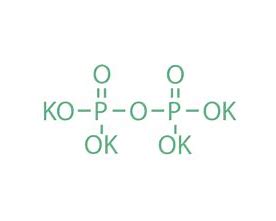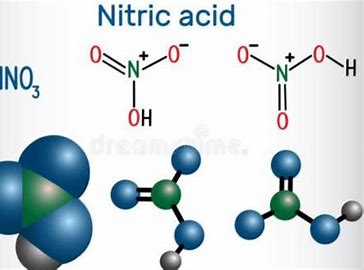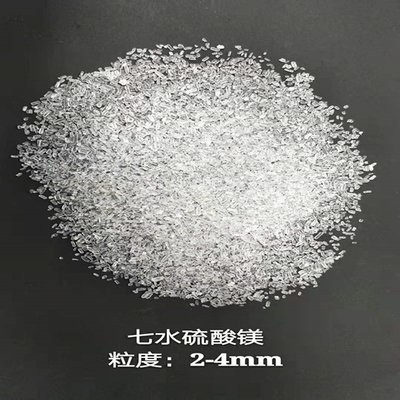reactions of dimethyl disulfide with metals
What is Dimethyl Disulfide?
DMDS is an organosulfur compound with the chemical formula C2H6S2. It contains two sulfur atoms linked by a single bond (–S–S–), making it part of the disulfide family of chemicals. It’s a colorless liquid that carries a pungent, sulfur-like odor. That smell can be a giveaway in industrial environments!
Here are some key properties of DMDS that explain its importance and challenges:
- Boiling Point: 109°C (228°F). This relatively low boiling point means DMDS is volatile and manageable during distillation processes.
- Solubility: While it’s only slightly soluble in water, it can still create issues when mixed, particularly in industrial settings.
- Density: About 1.06 g/cm³, making it slightly denser than water.
Common Uses of DMDS:
DMDS is a highly versatile chemical and serves in several industries:
- Agriculture: Used as a soil fumigant, DMDS helps eliminate harmful pests, weeds, and pathogens before planting. It’s a less toxic alternative to other fumigants like methyl bromide.
- Petrochemicals: In refining, DMDS acts as a sulfur source during hydrotreating, helping remove impurities like hydrogen sulfide (H₂S).
- Chemical Manufacturing: DMDS serves as an intermediate material in the production of various sulfur-containing compounds.
Understanding these properties and applications is essential when planning any separation or recovery process involving DMDS.
Why Does Dimethyl Disulfide Mix with Water?
You might wonder, “Why does DMDS mix with water at all?” Even though it’s not fully soluble, DMDS can partially dissolve in water under certain conditions. This interaction mainly depends on the compound’s polarity and molecular structure.
Here’s what happens:
- Low Solubility: Unlike fully miscible compounds like ethanol, DMDS exhibits low solubility in water. It doesn’t dissolve easily but can mix enough to complicate processes.
- Temperature Influence: Higher temperatures can increase solubility slightly, which is important in industrial setups where heat is part of the workflow.
- Environmental Factors: Industrial contaminants, pH levels, or the presence of other substances in water may affect how much DMDS mixes.
For example, during hydrotreating in petrochemical plants, DMDS might come into contact with water. This creates a challenge when it partially dissolves, requiring separation to maintain water quality or recover the compound.
Understanding how DMDS interacts with water is the first step toward effectively separating it. Techniques like distillation or advanced filtration systems can take advantage of its density and boiling point differences. With the right approach, it’s possible to minimize waste and maximize recovery.
Reasons for Separating Dimethyl Disulfide from Water
Removing dimethyl disulfide (DMDS) from water is essential for both environmental and industrial purposes. Whether you’re focused on protecting natural ecosystems or optimizing industrial processes, understanding the reasons for separation helps you appreciate its importance. Let’s break it down.he UN Environment Programme (UNEP).
Environmental Concerns
DMDS, while useful in many applications, poses significant environmental risks when improperly managed. Once it makes its way into water systems, it creates several challenges that demand immediate attention.
- Toxicity: DMDS is harmful to aquatic life, even in small quantities. Its chemical structure can disrupt sensitive ecosystems by interfering with the health of organisms in waterways.
- Regulations: Strict regulations govern the discharge of chemicals like DMDS into the environment. Agencies like the EPA often impose limits on permissible concentrations to prevent toxicity. Non-compliance can lead to hefty fines.
- Decomposition Risks: In water, DMDS may break down into other sulfur-containing compounds, which can further harm aquatic environments or contribute to foul odors.
Failing to separate DMDS from water not only risks ecological harm but can also trigger regulatory penalties and reputational damage for businesses relying on this compound.
Industrial Importance
In industrial settings, water contaminated with DMDS can wreak havoc on operations. Effective separation is critical for maintaining performance and preventing costly setbacks.
- Protecting Equipment: DMDS can corrode industrial components, especially when mixed with water. Over time, this leads to increased maintenance costs and potential downtime.
- Efficiency Boost: When water is free of DMDS, industrial processes like distillation or chemical synthesis run more smoothly, saving energy and reducing wastage.
- Ensuring Purity: Product purity is non-negotiable in fields like petrochemical refining and agriculture. Traces of DMDS in water can lead to compromised end products, impacting customer trust and quality standards.
Industries that depend on DMDS must prioritize its removal from water to safeguard equipment, optimize operations, and ensure compliance with production standards.
Separating DMDS isn’t just about meeting regulations or avoiding risks. It’s about taking a proactive step toward sustainability and efficiency that benefits both the environment and industry alike.
Methods for Distilling Dimethyl Disulfide from Water
Separating dimethyl disulfide (DMDS) from water requires precision and choosing the right method depending on the context. Below, we break down several techniques commonly used, detailing how they work, their advantages, and considerations.
Distillation Techniques
Distillation is one of the primary methods for separating DMDS from water, especially when purity is the goal. DMDS has a relatively low boiling point of 109°C (228°F), which makes it easier to vaporize and condense.
- Process: The water-DMDS mixture is heated until DMDS vaporizes. The vapor is then cooled and collected as a liquid.
- Boiling Point Considerations: Since water has a higher boiling point (100°C at standard pressure), energy efficiency can be a concern. Careful temperature control is needed to avoid excess water evaporation.
- Energy Requirements: Traditional distillation can require significant energy, especially in large-scale operations. Using insulated systems can help reduce energy wastage.
Distillation is straightforward, but it might not be ideal for environments where reducing energy costs is a priority.such as the Environmental Protection Agency (EPA),
Steam Distillation
Steam distillation is perfect for volatile and heat-sensitive substances like DMDS. It uses steam to carry out the distillation at a lower temperature than direct heating.
- How It Works: Steam passes through the mixture, vaporizing the DMDS. The vapor is then condensed and collected.
- Advantages:
- Reduces the need for high heat, saving energy.
- Prevents DMDS degradation due to overheating.
- Why It’s Preferred: This method is particularly useful when DMDS is mixed with other substances or contaminants, offering cleaner separation.
Steam distillation bypasses some of the issues with energy consumption and is widely used in industrial setups where efficiency matters.
Liquid-Liquid Extraction
For situations where distillation isn’t enough, liquid-liquid extraction (LLE) can help. This method uses a solvent to selectively dissolve DMDS out of the water.
- Process: A suitable organic solvent, immiscible in water, is added. DMDS preferentially dissolves in the solvent, creating two distinct layers. The solvent phase is then separated and processed to recover the DMDS.
- Factors Affecting Efficiency:
- Solvent Choice: The solvent must have a high affinity for DMDS and low toxicity.
- Temperature: Higher temperatures can improve extraction rates but may complicate separation later.
- Mixing: Proper agitation ensures effective contact between water and the solvent.
While LLE is efficient, it often requires additional steps to recover and recycle the solvent, adding complexity.
Membrane Technologies
Membrane-based separation methods represent advanced approaches to removing DMDS from water. These methods use specialized membranes that selectively allow certain substances to pass through.
- How It Works: Pressure or concentration gradients drive the separation. DMDS molecules pass through the membrane while water remains behind.
- Advantages:
- Minimal energy consumption compared to distillation.
- Compact equipment, ideal for constrained spaces.
- Potential for DMDS Removal: While membranes are still evolving in this field, they show promise, particularly in cutting down operational costs and increasing efficiency.
Using membranes can revolutionize DMDS separation but may require significant upfront investment in technology.
Hybrid Methods
For complex mixtures or when higher purity is required, combining methods can offer better results. Hybrid techniques often merge distillation, extraction, or membrane technologies.
- Key Examples:
- Distillation + Extraction: Start with distillation to remove bulk DMDS, then apply solvent-based LLE to deal with residual amounts.
- Membrane + Distillation: Use membrane filtration to pre-concentrate or desalt the water before distillation, reducing energy costs.
- Why It Works: Each method compensates for the limitations of the other, leading to higher efficiency and better separation.
Hybrid methods are gaining traction in industries aiming for both environmental compliance and operational excellence.
Each of these methods has its place, depending on your goals and resources. Whether you’re managing small-scale operations or industrial-level separation, selecting the right approach can save time, energy, and costs.
Step-by-Step Process for Distilling Dimethyl Disulfide from Water
Distilling dimethyl disulfide (DMDS) from water is a delicate operation requiring careful planning and execution. Safety, the right equipment, and precise operating conditions are crucial to success. Below is a practical guide to help you navigate this process effectively.
Preparation and Safety Measures
Handling DMDS safely is non-negotiable. The compound’s strong odor and potential toxicity demand proper precautions to protect yourself and your surroundings.
- Ventilation is critical: Ensure you’re working in a well-ventilated area, preferably with a fume hood or outdoor airflow.
- Wear protective gear: Equip yourself with chemical-resistant gloves, safety goggles, and a lab coat to guard against spills and splashes.
- Emergency setups: Always have a first-aid kit, eyewash station, and fire extinguisher nearby. An accidental spill or reaction can escalate quickly.
- Handle containers carefully: Use sealed, labeled containers to prevent leakage or unnecessary exposure during the process.
Taking these steps ensures you’re prepared to work with DMDS while minimizing risks.
Required Equipment
Using the right tools is key for successful distillation. Below is a list of essential equipment you’ll need, along with their functions:
- Distillation Column: Separates DMDS from water by taking advantage of its boiling point. Look for one optimized for volatile organic compounds.
- Condenser: Cools the DMDS vapor back into liquid form for collection. A Liebig or Graham condenser works well for this purpose.
- Temperature Controller: Monitors and maintains precise temperatures during distillation to avoid overheating or inefficiency.
- Round-Bottom Flask: Serves as the container where the water-DMDS mixture is heated. Its shape promotes even heat distribution.
- Heating Mantle: Provides consistent heat for the flask, minimizing the risk of uneven boiling.
- Receiving Flask: Collects the condensed DMDS after distillation. Using a sealed flask prevents loss and contamination.
Having this equipment ready and in working condition saves time and ensures accuracy during the process.
Operating Conditions
Distillation isn’t just about heating the mixture; it’s about doing so with precision. Understanding the optimal operating parameters ensures efficient separation:
- Temperature: Set the heat to around 109°C (228°F) to encourage DMDS to evaporate while keeping the water mostly undisturbed.
- Pressure: Using atmospheric pressure works in most cases, but vacuum distillation may help if you’re working at high altitudes or with additional contaminants.
- Heating Rate: Avoid rushing the process by increasing heat too quickly. A steady heating rate ensures controlled evaporation.
Maintaining these conditions ensures that the DMDS separates efficiently, without waste or unnecessary complications.
Monitoring and Adjustments
Keeping a close eye on the process and making real-time adjustments is vital for success. Here’s what to focus on while monitoring:
- Temperature Monitoring: Always keep an eye on the thermometer. If the temperature fluctuates, it could compromise separation efficiency.
- Condensation Efficiency: Check the condenser to ensure it’s cooling the DMDS vapor effectively. Insufficient cooling may result in losses or contamination.
- Flow Rate: If the DMDS doesn’t condense quickly enough, adjust the cooling water flow through the condenser.
- Collection Check: Inspect the receiving flask periodically. Ensure no water or impurities are leaking into the collected DMDS.
By staying alert and responsive during the process, you can fine-tune parameters to minimize errors and achieve better results.
This structured approach to distilling DMDS from water combines safety, preparation, and technical know-how, ensuring effective separation every time.
Challenges and Considerations
When it comes to distilling dimethyl disulfide (DMDS) from water, there are critical challenges you can’t ignore. Addressing these ensures safety, efficiency, and environmental compliance.
Contamination Risks
Contamination is always a concern when working with volatile chemicals like DMDS. Even the smallest lapse in handling or equipment hygiene can ruin the final product or harm the environment.
To reduce contamination:
- Use high-purity materials: Ensure containers, tubes, and other equipment are clean and DMDS-compatible. Residues from prior use can interfere with distillation.
- Prevent air exposure: DMDS reacts with air over time. Keep it in sealed systems to avoid oxidation or degradation.
- Filter your input: If the water is mixed with particles or other substances, pre-filtering prevents clogging and unexpected side reactions during distillation.
- Regular maintenance: Frequently inspect and clean distillation equipment. Deposits or wear can lead to leaks or contamination.
Implementing these measures protects the process’ integrity and ensures better yield, whether you’re working in a lab or an industrial plant.
Energy Efficiency
Distillation can be energy-intensive, especially at scale. High energy use directly impacts costs and sustainability efforts. But with smart practices, you can balance efficiency and performance.
Here’s how to cut energy consumption:
- Insulate equipment: Heat loss through poorly insulated flasks or columns wastes energy. Using insulation can keep systems efficient.
- Optimize heating controls: Use a temperature controller to maintain precise heat. Consistent temperatures prevent overuse of energy.
- Leverage pre-heating: Pre-warming water before it enters the distillation setup minimizes the energy to reach boiling.
- Combine techniques: A hybrid approach, such as combining membrane filtration with distillation, can significantly cut down high-energy requirements.
Reducing energy usage doesn’t just save money—it also lowers your process’s environmental footprint.
Waste Disposal
Handling DMDS and water residuals safely is just as important as the distillation process itself. Improper disposal risks both legal trouble and environmental harm.
Key waste disposal guidelines:
- Label clearly: Separate DMDS waste and any contaminated water with appropriate labels for hazardous materials.
- Follow regulations: Research local laws for chemical disposal. Unsure? Contact a certified hazardous waste handler to assist.
- Contain everything: Store residues in spill-proof, chemical-resistant containers. Accidental spills or leaks complicate cleanup.
- Neutralize where possible: In cases where DMDS residues remain, look into neutralization options before disposal. Specialized cleaning agents can break down harmful compounds.
Taking proper disposal steps assures compliance and protects waterways from damage.
Staying ahead of these challenges is about preparation and careful execution. No corners should be cut in maintaining a safe, efficient, and legal operation.
Applications of Recovered Dimethyl Disulfide
When dimethyl disulfide (DMDS) is successfully recovered, its value doesn’t end. This sulfur-rich chemical has numerous practical uses once it’s brought back into circulation. Its versatility makes it a sought-after component across multiple industries. Let’s explore two key aspects of its reuse.
Industrial Reuse
Recovered DMDS remains a critical ingredient in many industrial applications. Recycling it not only reduces costs but also ensures a consistent, reliable supply for essential operations. Once purified, it can be seamlessly reintroduced into high-demand sectors, such as:
- Petrochemical Refining: DMDS serves as a sulfur additive in hydrotreatment processes. It helps remove impurities like hydrogen sulfide (H₂S) from refined petroleum products. Reusing DMDS from water not only cuts waste but also supports cost-effective operations in refineries.
- Agricultural Formulations: In farming, DMDS is widely used as a soil fumigant. It effectively sterilizes soil by targeting pests, weeds, and pathogens while maintaining agricultural productivity. Recovered DMDS offers farmers an environmentally conscious yet powerful option for crop preparation.
- Chemical Synthesis: With its unique sulfur content, DMDS is essential for creating other sulfur-containing compounds. Industries harness its recovered form to manufacture lubricants, rubber additives, and solvents.
Recycling DMDS ensures that industries reliant on these applications have a sustainable and economical source, reducing their need for fresh production.
Environmental Benefits
Recovering dimethyl disulfide isn’t just good for businesses—it’s a major win for the environment. By capturing and reusing DMDS instead of discarding it, negative impacts on ecosystems can be avoided.
- Pollution Reduction: Left untreated, DMDS in water can harm aquatic life and lead to contamination of local waterways. Recovery efforts minimize these risks by ensuring the chemical doesn’t make its way into the environment.
- Lower Carbon Footprint: Manufacturing DMDS from scratch involves energy-intensive processes that generate greenhouse gas emissions. Reusing what’s already been produced cuts down on energy demand and carbon output.
- Alignment with Sustainability Goals: Many companies now aim to adopt greener practices. Recycling DMDS not only supports compliance with environmental regulations but also enhances corporate sustainability profiles.
.jpg)







